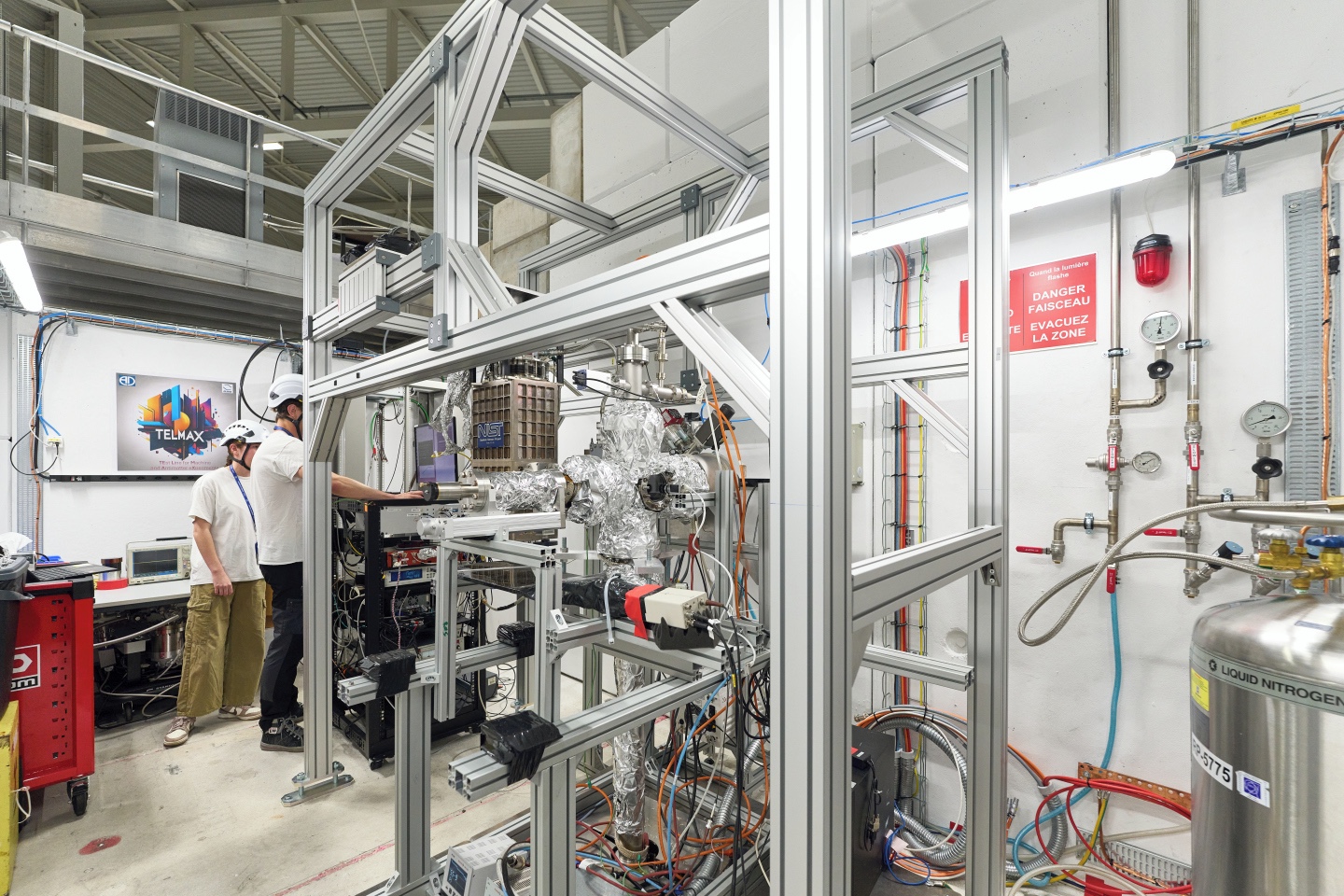
TELMAX, the antimatter factory's new test beamline, is supplied by ELENA (located under the ground in the TELMAX zone). The beam of antiprotons arrives vertically and impacts the target (currently from the PAX experiment) at the centre of the aluminium-covered cross. (Image: CERN)
CERN's antimatter factory produces low-energy (i.e. 'slow') antiprotons in order to "manufacture" and study antimatter. To achieve this, two decelerators, the Antiproton Decelerator (AD) coupled to the ELENA (Extra Low ENergy Antiproton) deceleration ring, supply seven permanent experiments (AEgIS, ALPHA, ASACUSA, BASE, BASE-STEP, GBAR and PUMA) via the same number of beam transfer lines.
This unique facility is now open to new users. In 2024, the antimatter factory team commissioned TELMAX (TEst Line for Machine and Antimatter eXperiments), the world's first antiproton beam line that is "open for booking". This new antiproton beamline operates according to the same principle as other test-beam facilities at CERN, i.e. it is open to scientists from all over the world wanting to use an antiproton beam for their experiments for a couple of weeks or months.
"A beamline from ELENA became available in 2018 after the ATRAP experiment was shut down, so it seemed only right to create a test beam and offer more collaborations and experiments the chance to work with antimatter - such opportunities are pretty rare!" enthuses François Butin, technical coordinator of the antimatter factory.
On 5 May, antiprotons were delivered to the first experiment at TELMAX, the antiProtonic Atom X-ray spectroscopy experiment (PAX), which is being conducted by a team from France's Centre national de la recherche scientifique. PAX was launched in September 2024 and aims to study the quantum structure of exotic antiprotonic atoms (in which an antiproton replaces an electron) so as to test quantum electrodynamics (QED) - the theory that describes the interactions between light and charged particles - in intense electric fields.
For the experiment to work, however, the physicists responsible for beam distribution at the antimatter factory had to adapt the TELMAX beam, reducing its intensity by a factor of one thousand. "Meeting this technical challenge has enabled us to extend the range of intensities offered not only to the future users of TELMAX but also, if necessary, to the other experiments at the antimatter factory", François Butin adds.
The PAX experiment will continue its work at TELMAX until July, when another experiment will take its place. And more will follow. Requests to use the TELMAX beamline are assessed by the physics coordinators of the AD/ELENA complex and, if you're interested, there's room for more proposals!






